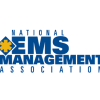As the founding editor of JEMS, I had the unique opportunity to observe (and edit) two of the early giant (and often conflicting) intellects of our profession, Jim Page and Jack Stout. I’ve written about Jim’s legacy and how his papers are now archived at the UCLA Special Collections Library, preserved for history (jamesopage.org). I’m now pleased to say that Jack’s writings are available at jackstout.com, due to the efforts of many of Jack’s advocates, including Jonathan Washko, a manager at Regional Emergency Medical Services Authority in Reno, Nev.
“What Jon and others have done is extremely gratifying,” says Todd Stout, Jack’s son and CEO of FirstWatch in Encinitas, Calif. “This collection is intended to be a starting point. We hope others will contribute letters, reports, audio recordings and other material related to my dad’s work—or just their opinions and comments.”
Jack is retired and living quietly in Arizona, but the “Stoutian principles” of patient-centered operational policies and the appropriate deployment of resources still resonate, inform … and, yes, sometimes infuriate.
I was first introduced to Jack in 1980, when he wrote a series of groundbreaking articles for JEMS introducing the concept of the public utility model and high-performance EMS. His concept, derived from research and then practical application in several cities, originated while he was a member of a team studying the topic at the University of Oklahoma’s Center for Economic and Management Research.
Like Jim Page, Jack combined intellectual firepower with a gift for communication. As a young editor, I loved opening mail from him, marking the arrival of another column. Whether you agreed with his positions or not (and many did not, including Jim Page and Thom Dick on occasion), you had to admire the style, wit and forceful logic with which he wrote. He was able to translate complex theory and operational tactics into brilliant narrative that was compelling, persuasive and instructional—not always an easy task with important but dry topics, like vehicle maintenance or statistical analysis. In teaching writing classes, I have often referred to Jack’s articles as examples to follow.
Jack continued to write for JEMS and other publications for the next 15 years. He was also a regular speaker at national conferences, helping to create and facilitate innovative “battle of the bids” workshops that pitted public and private agencies against each other in realistic scenarios as they prepared responses to mock requests for proposals. (As I recall, Jack’s team usually won.)
Jack has received many accolades along the way, but one particular moment stands out for me. In 1981, a skywalk at the Hyatt Hotel in Kansas City collapsed, killing and trapping hundreds of people in a horrendous scene of carnage and chaos. Jack had been instrumental in creating the Kansas City public utility model EMS system (known by most as MAST) and was at the scene. He wrote an extraordinary first-person account of the rescue efforts; it remains the gold standard for timely reporting on disasters, not only for the way it describes the action but in how it provides insight into implications for EMS system response to mass casualty incidents.
Do yourself a favor and check out Jack’s writing. Let the debate continue!
Keith Griffiths can be reached at publisher@emergencybestpractices.com.












